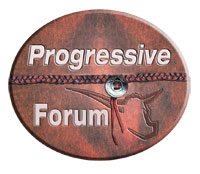
Loren Berger
Herdmasters
Stapleton, Nebraska
“I believe we are going to make much more rapid selection largely due to genomics as well as other areas. With our new tools, we can evaluate genetics early in the life of an animal and manage appropriately for their genetic potential, e.g., marbling.
The new genetic tools have allowed us to be more specialized in our genetic selection of cattle, for example finding ways to fit cattle better into the environment by tailoring them to what we need for specific environments.
Overall, we can make decisions earlier in the animal’s life and match them where they fit the best.”

Robert Williams
Director of Breed Improvement
American International Charolais Association
Kansas City, Missouri
“Increased accuracy as a result of better technology that allows us to collect better data and analyze that data more effectively.
New media avenues for education will also take place between producers/researchers/extension which will lead to a broader understanding and adoption of these tools.”

Don Trimmer
Director of Beef Programs
Accelerated Genetics
Baraboo, Wisconsin
“I believe the potential is great for utilizing DNA markers in genetic selection. We need to have continual validation and documentation on the markers of the traits identified.
At the current time, we have put a lot of efforts toward genetic selection, but we must realize it is not the silver bullet. Markers identified don’t account for 100 percent of variation in traits.”

Ben Eggers
Sydenstricker Genetics
Mexico, Missouri
“Genetic selection has the greatest potential for measuring the most difficult traits such as disease resistance, fertility traits, tenderness and feed efficiency.
As they map the genome, we can move past the traits most easily measured (e.g., carcass and growth) to measure the ones that could most potentially benefit the industry and are the hardest to measure.
All of this is a work in progress as we go forward. Genomic mapping will give us insight into thousands of traits.”

Leo McDonnell
McDonnell Angus Ranch
Columbus, Montana
“We have used genetic selection on simple traits; it’s time we now validate it on the complex traits such as marbling, fertility and efficiency.
When we do that, a responsible breeder can then step back and use phenotype data that is tied in with other tools such as production index values, EPDs and validated genomics for enhanced genetic selection.”

Dr. Larry Cundiff
Research Scientist
USDA-MARC, Nebraska
“The potential will continue to develop seedstock cattle matched to changes seen going forward; it is what we have always done, trying to move the industry forward.
The power of selection will be enhanced by incorporating these molecular genetic approaches and effective tools still needed to make changes. Overall genomics will make it easier to measure the difficult traits.” ![]()
(Editors’ note: this question was posed by speaker Steve Kappes, USDA, Deputy Administrator, Animal Production & Protection during the opening session of the 2014 BIF Conference, Lincoln, Nebraska.)









